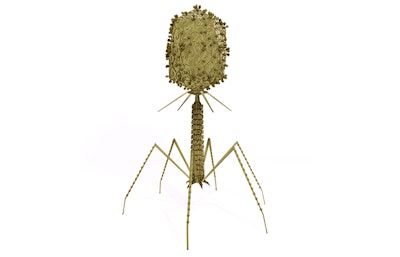
Ground turkey treated with naturally occurring phage technology had a decreased prevalence of Salmonella compared to other treatment methods, reveals a new study.
“We want to reduce the number of pathogens so that we can keep all of our consumers safe and to reduce the risk of consumption of poultry products,” explained Dr. Jack McReynolds, R&D and Technical Director, Arm & Hammer Animal and Food Production. “If you look across the industries, all the invested parties have the same objective when it comes to food safety: reducing that public health risk.”
Salmonella is gram-negative anaerobic bacterium that is responsible for approximately 1.35 million illnesses, 26,500 hospitalizations and 420 deaths in the U.S. each year, according to data from the Centers for Disease Control and Prevention (CDC). The bacteria has become increasingly multi-drug resistant, making it more difficult to treat.
What is phage technology?
Phage technology harnesses viruses to target and destroy bacterial cells on a surface or in an organism. Phages are harmless to people, only activating when a specific bacterium is present.
“Phages are very specific to their bacterial hosts. I like to use the analogy that broad-spectrum antimicrobials are like shooting a shotgun. There’s lots of little pellets that go out and cover a huge number of bacterial targets. Conversely, a phage is like a rifle shot in that they are very specifically targeted. In this case, the specific target is Salmonella.” McReynolds said.
“There are two types of phages, lytic and lysogenic. Phages used to mitigate bacterial contamination are all lytic, which means they attach to and destroy a bacterial cell, as opposed to lysogenic bacteria that disable, but don’t kill bacterial cells”
Depending on the temperature of the environment, the process can take anywhere from five minutes to four hours for full efficacy to take effect.
The study
The food safety study compared 18 batches of bone-in drums. Both groups were dipped in 500 ppm peracetic acid (PAA) for 30 seconds. One was additionally treated with phage technology for an additional 30 seconds.
The research detected Salmonella in 28.3% of the treated group versus 46.1% in the control bone-in drums.
Like what you just read? Sign up now for free to receive the Poultry Future Newsletter.
















